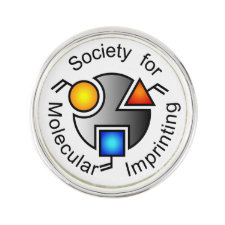
Authors: Zhang TL, Liu F, Li KA
Article Title: Influence of the Number and Relative Position of the Interacting Groups in Template Molecule on Molecular Imprinting Effect.
Publication date: 2010
Journal: Chemical Journal of Chinese Universities
Volume: 31
Issue: (6)
Page numbers: 1126-1130.
Alternative URL: http://www.cjcu.jlu.edu.cn/CN/abstract/abstract12864.shtml
Abstract: In order to explore the influence of the interacting group's number and relative position of the template molecule on molecular imprinting effect, in the present study four molecularly imprinted polymers( MIPs) were prepared using a series of hydroxybenzoic acids with different numbers of OH groups and their positional isomers such as 3,4,5-trihydroxybenzoic acid( 3,4,5-THBA), 3,4-dihydroxybenzoic acid(3,4-DHBA), 2,4-dihydroxybenzoic acid(2,4-DHBA) and 3-hydroxybenzoic acid(3-HBA) as model templates, respectively, acrylamide as functional monomer, ethyleneglycol dimethacrylate as cross-linker and acetonitrile(MeCN) as porogen by bulk non-covalent imprinting technique. The molecular recognition performances were characterized by high-performance liquid chromatography. The results showed that all of the imprinted polymers exhibited molecular imprinting effects for the corresponding templates and the imprinting factors were 5.51, 5.55, 2.60 and 2.03 for 3,4,5-THBA, 3,4-DHBA, 2,4-DHBA and 3-HBA, respectively, in the mobile phase of H2O/MeCN(volume ratio, 1 : 99). Furthermore, the comparison of molecular recognition ability was made among them and gentisic acid-, salicylic acid-, 4-hydroxybenzoic acid-imprinted polymers, which were previously prepared under the same conditions as the above four hydroxybenzoic acids-imprinted polymers except for the template molecules. By comparative study on all of the above mentioned hydroxybenzoic acid-imprinted polymers, the following conclusions are drawn: (1) the template with multi-functional groups facilitates the preparation of MIP with high imprinting efficiency; (2) it was found that the positions of COOK relative to OH on the benzene ring have marked influence on the imprinting effects of templates. Specifically, the imprinting efficiency is higher for the template with -COOH and OH at para-position than that at meta-position, whereas the imprinting effect will decrease if -COOH and OH are at ortho-position owing to their forming intramolecular hydrogen bond. In addition, a baseline separation of the mixture of 3,4,5-THBA and 2,4-DHBA was obtained on 3,4-DHBA-imprinted polymer, which is a close analogue of 3,4,5-THBA. This provides the potentiality for the selective separation and detection of bioactive 3,4,5-THBA
Template and target information: 3,4,5-trihydroxybenzoic acid, 3,4,5-THBA, 3,4-dihydroxybenzoic acid, 3,4-DHBA, 2,4-dihydroxybenzoic acid, 2,4-DHBA, 3-hydroxybenzoic acid, 3-HBA
Author keywords: molecularly imprinted polymer, molecular recognition, Imprinting effect, hydroxybenzoic acid, high-performance liquid chromatography



Join the Society for Molecular Imprinting

New items RSS feed
Sign-up for e-mail updates:
Choose between receiving an occasional newsletter or more frequent e-mail alerts.
Click here to go to the sign-up page.
Is your name elemental or peptidic? Enter your name and find out by clicking either of the buttons below!
Other products you may like:
 MIPdatabase
MIPdatabase









